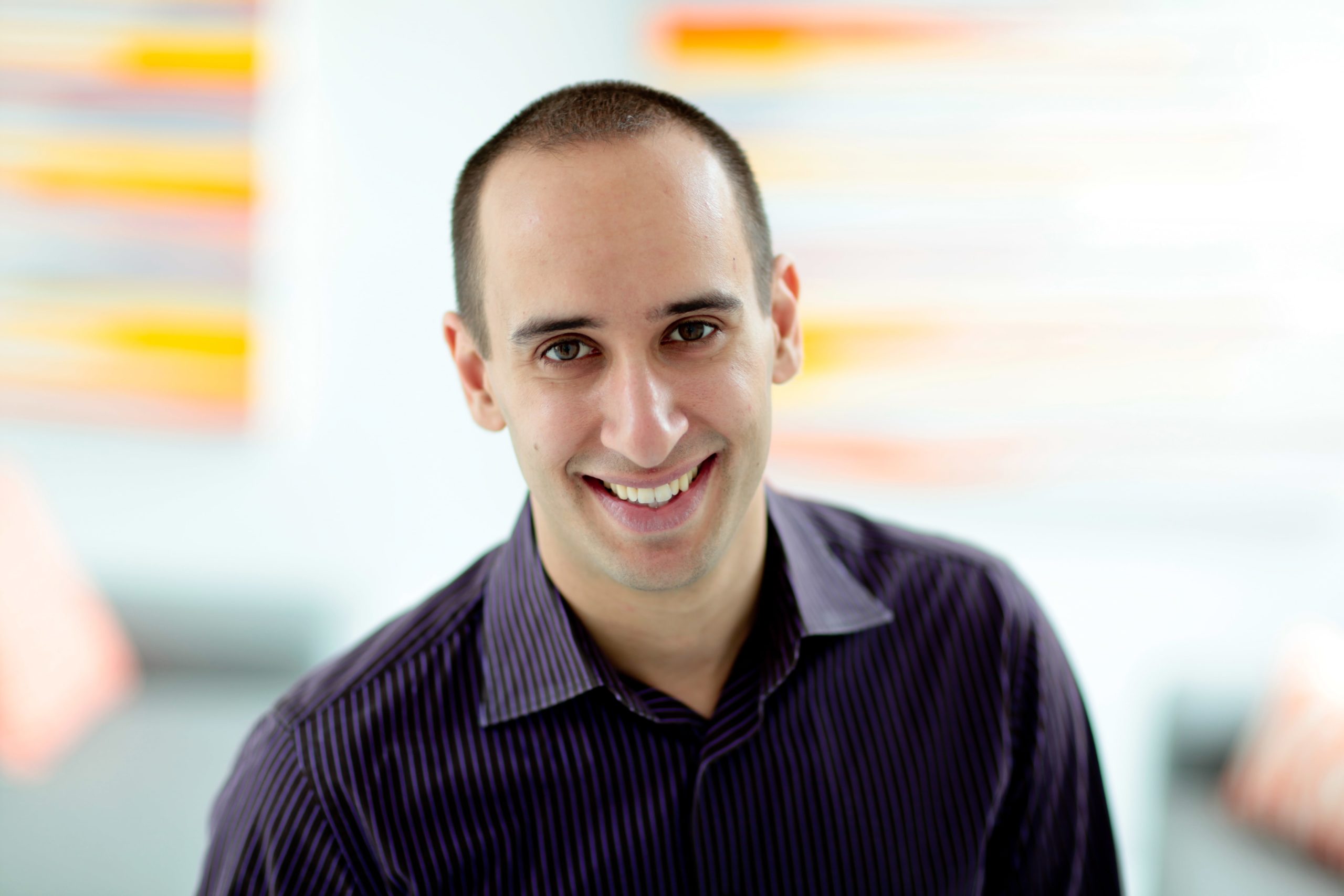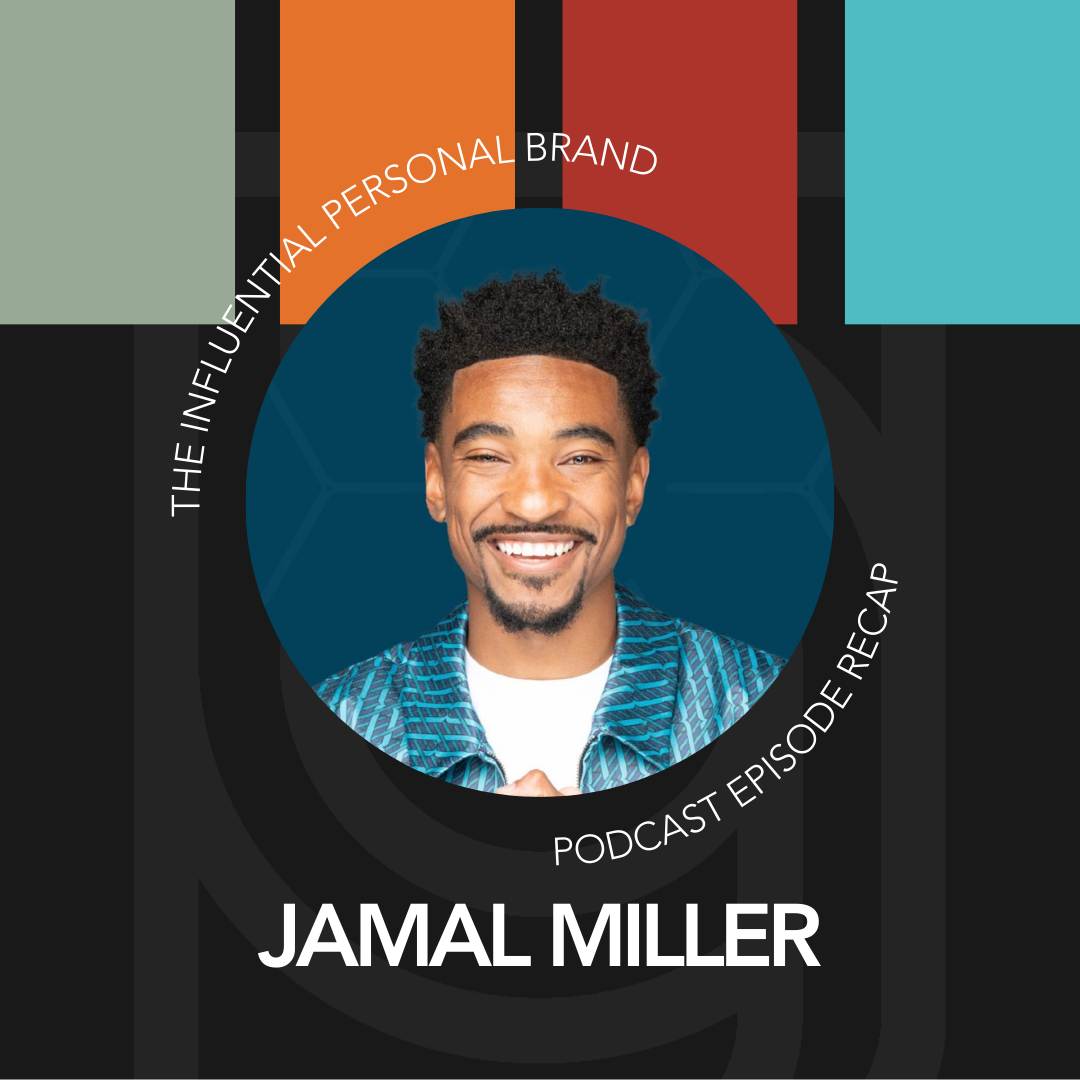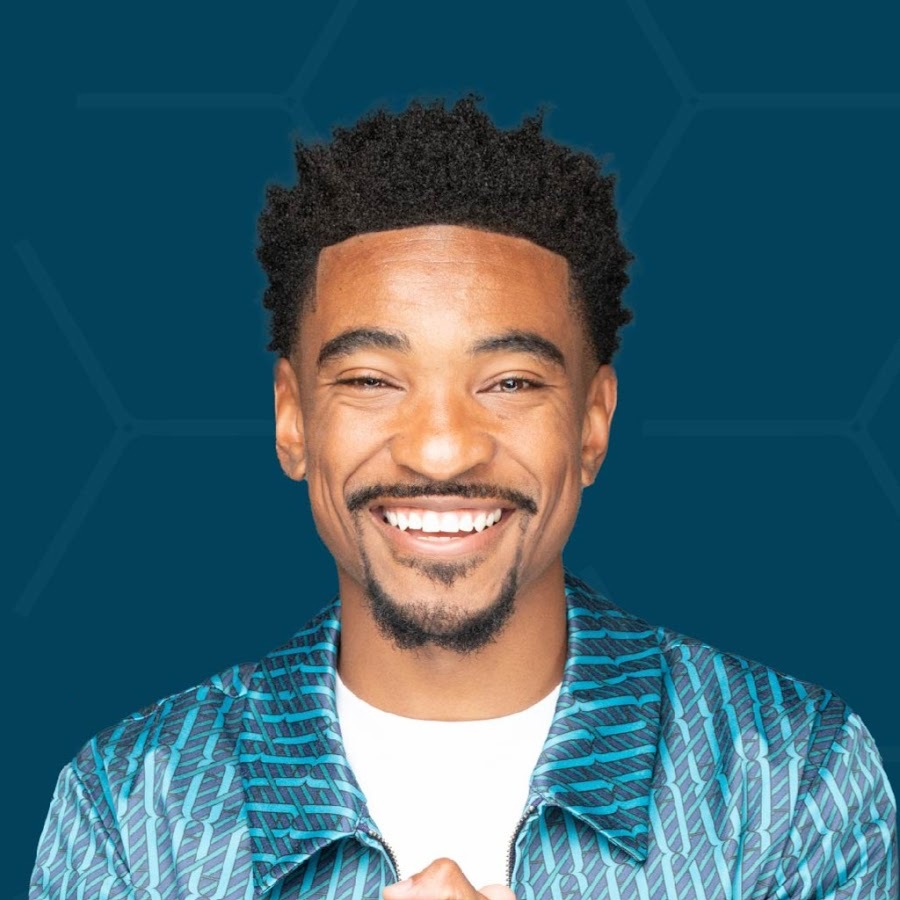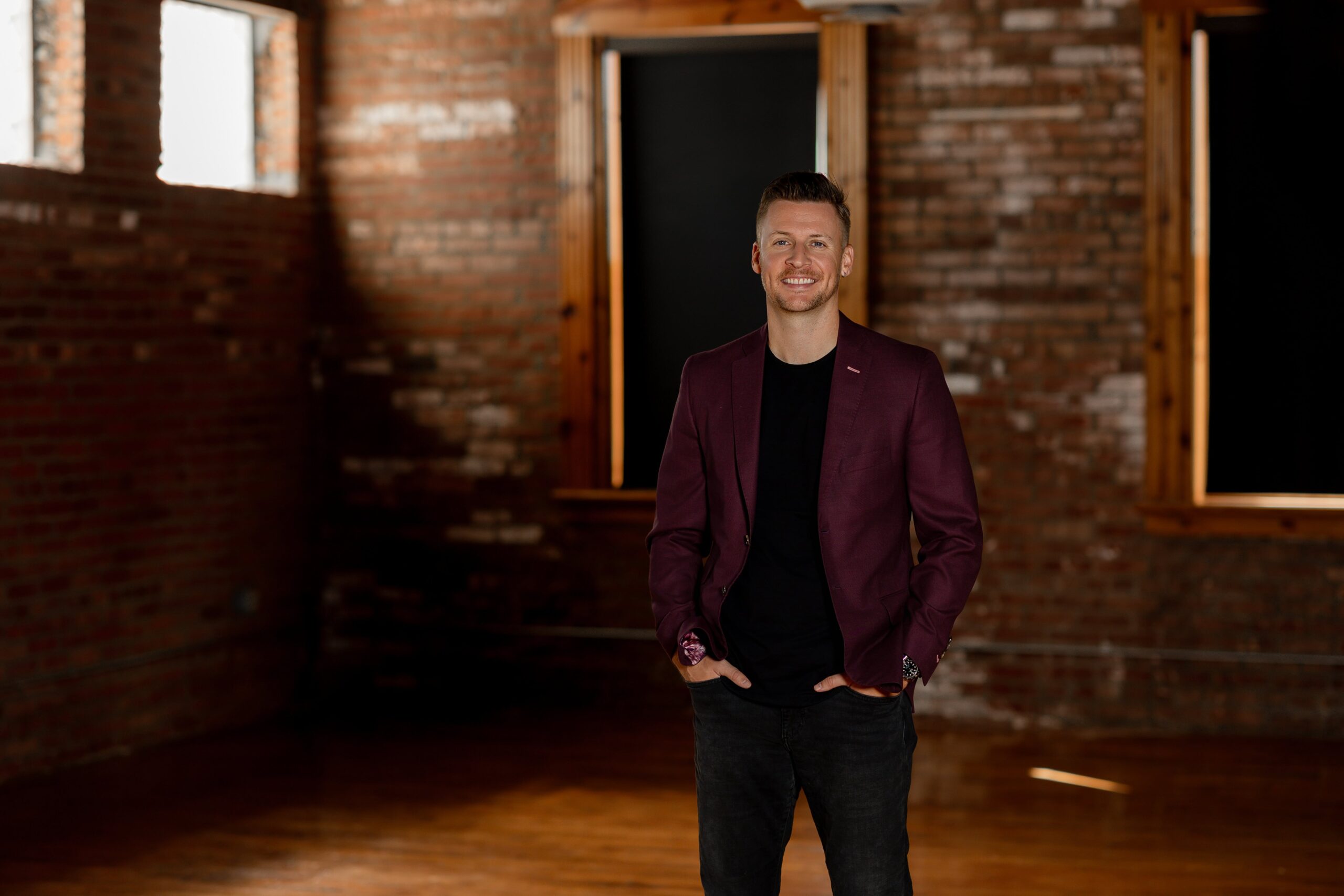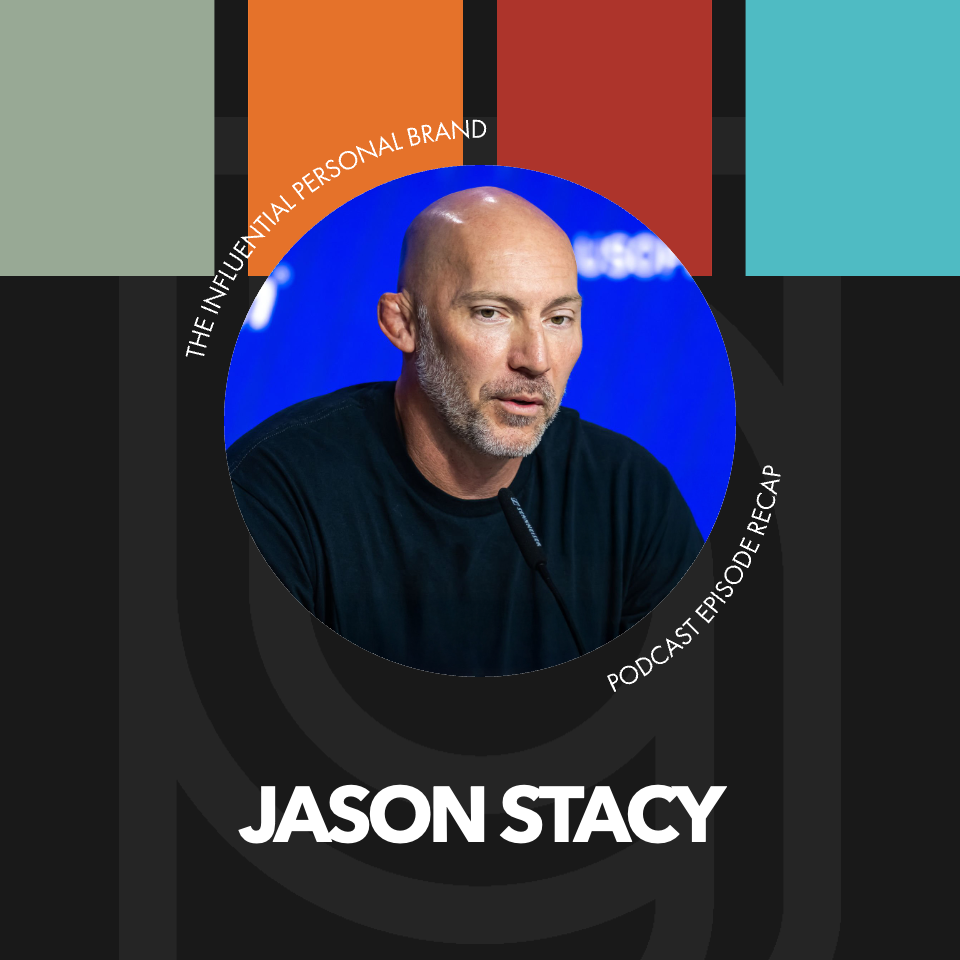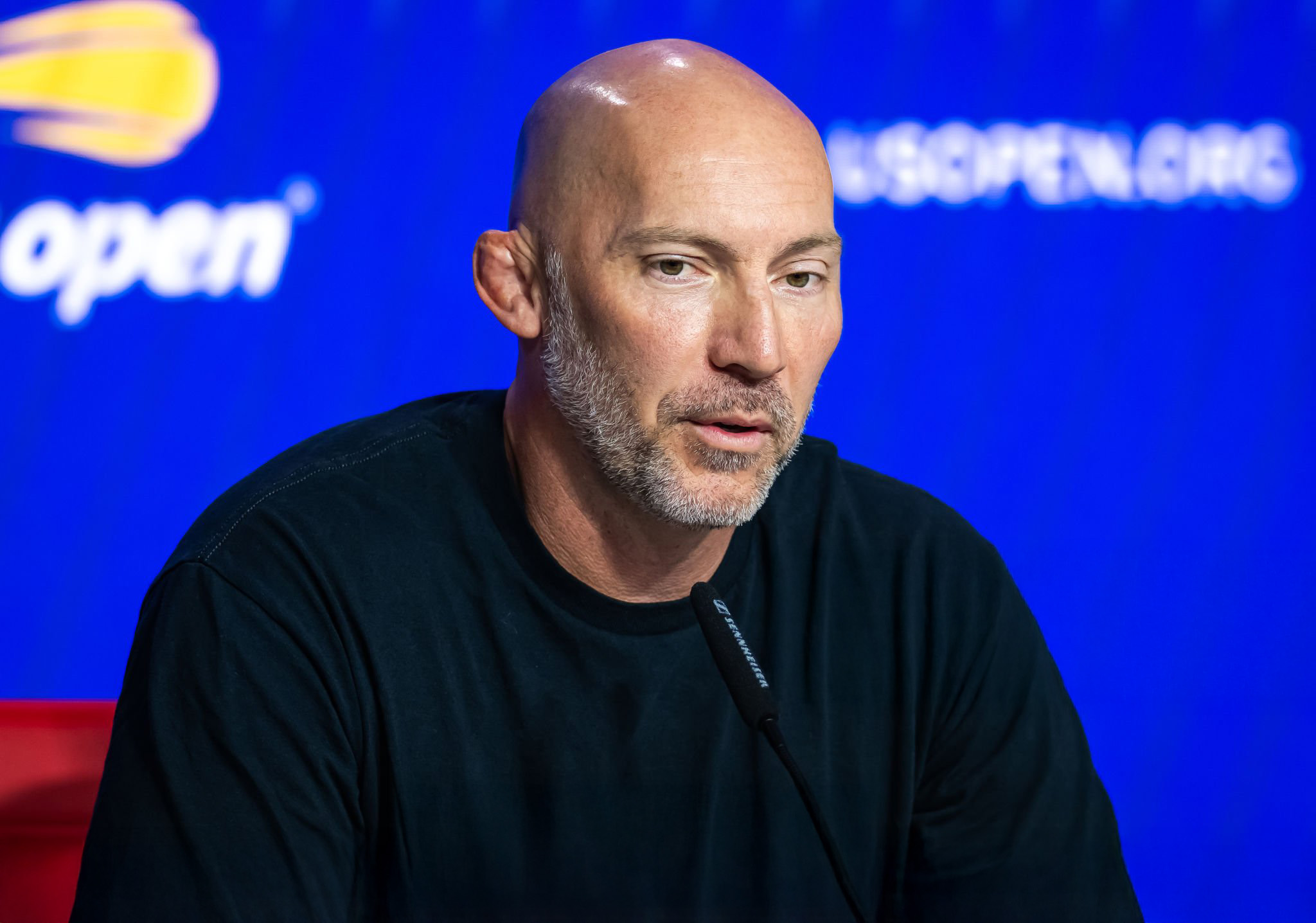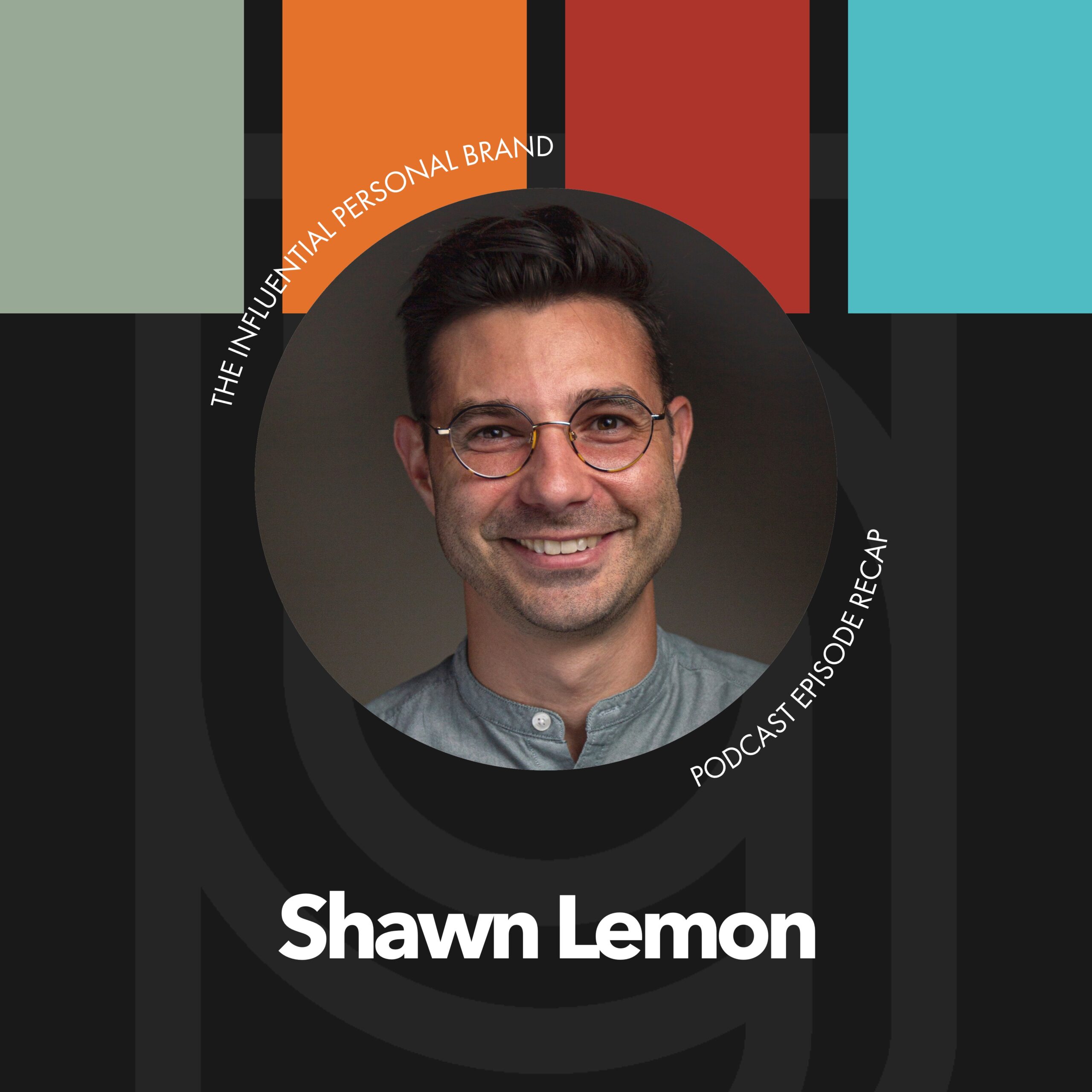RV (00:02):
Oh, you don’t even know about the powerful interview you are about to hear right now. My man, Evan Carmichael, first of all, is a genius. He’s so successful. I mean, he sold his first company when he was 19 years old, a biotech firm biotech software company. He’s raised 15. He was raising 15 million for venture capitalists when he was 22 years old. And he’s done so many things for entrepreneurs today. He is known for a lot of things. What we’re gonna talk about is specific his genius strategy on YouTube. And when I say genius, I mean, he’s got over 3 million subscribers on his YouTube channel. He did a, he did a, a training, a full, like a 90 minute training for our members inside our portal for our pain community. And it just absolutely blew my mind and, you know, Lewis Howes and Brendan Burchard and grant Cardone and ed Mylett like Gary V like all of these people are people that look to Evan for advice and ideas on YouTube. So I was like, I’m begging him, please come back on the podcast so that we could sell everybody our entire community at large. So Evan, welcome to the show, man. Thanks
EC (01:17):
For having man. Always, always an honor to be here talking to the one and only rory Vaden. Let’s go, man.
RV (01:22):
Yeah. So you’re such a beast on YouTube. How do I get, how do I become a beast on YouTube? Like what, what do, what are the key things I need to know to just like start dominating on YouTube?
EC (01:36):
Yeah. Okay. So listen to position it let’s go here. Youtube is, is an education platform. Like I think a lot of people think of it as, as entertainment and fun and movies and music. Cool. But YouTube is, is the number one education platform. So, you know, people are trying to figure out how to be, become a more influential leader. Where are they gonna go? They’re gonna go to the library. Like, who are they gonna talk to? They’re gonna talk to their mom, like what they’re gonna go and search and your stuff will pop up and not just your videos, but again, other people’s videos, this content that people are going there to learn. And so YouTube is different than any, every other platform where we wanna be making long form content, teaching people because ahead of whatever, we’re trying to sell, we wanna put information.
EC (02:19):
We wanna put education, okay. We’re teaching people at scale to then bring them into whatever the thing is that we’re selling coaching products, program services, books, et cetera. And the beauty of something like YouTube is one your, your contentless forever. So the videos you make now in a year and two years, and six years are still getting your views, subscribers, attention leads, et cetera, where every other platform it goes away, right? Like Instagram, nobody cares what you posted a week ago. It’s instant, it’s Instagram, it’s gone. Every other platform’s the same. Youtube has the best monetization. So they’ll pay you, right? Like you could be making seven figures just from the ad revenue on your videos, as well as actually building your business. And the best part about YouTube is you can take the content since it’s long form and splice it up to put on all the other platforms.
EC (03:07):
So YouTube will tell you the best moments in every video, according to what the audience cared about, those little highlight moments, you can then tweak and put them to Twitter and Instagram and Facebook and all the other platforms. So all you really have to do is have a regular show long form on YouTube. And now we’re creating content everywhere. Most of the people listening, watching your goal is not to be a full time, just content creator. You got a business that you’re trying to run. We’re, we’re trying to build our membership groups and our coaching services and be a speaker and all of that stuff. And so you don’t have time to all day, every day, be on every single platform. You don’t have to be long form from YouTube, take the data, cut it up to be on every platform. So it kind of sits above all the other social media platforms. And most importantly, to help people’s message get out, to change the world.
RV (03:49):
Yeah. So I wanna dive in on something you just said there, because if we don’t highlight it, it’s easy to miss it. And this is such a tactical thing that you can do where, so the idea of repurposing your content, right? So a lot of people talk about that. We have a thing we teach called the content diamond, which is, you know, taking long form content and dividing it up. But part that you added, you know, specifically, at least to my education, which was so brilliant, was making that a data driven selection to figure that out. So can you talk about like, where do you go on YouTube and what are you clicking on? Like I know you just gotta talk us through it, cuz it can’t like show the screen, but, but what exactly are you looking for? Because just that, that one tip alone goes, if you win on YouTube, even if you don’t win on YouTube, if you suck on YouTube, but you can figure out the moments that win, like you can use that to inform everywhere else. So, so talk more about that.
EC (04:52):
Youtube has the best data platform of all of all those social media networks. And I love the data and I can geek out on it all day long and, and dive into it. It’s overwhelming for a lot of people. The only thing you have to care about is this, the audience retention curve, like write that down. If you don’t know what I’m talking about and you think you might at someday want to start a YouTube channel, come back to that, write it down. It is your golden ticket. The audience retention curve. What that does is show you second by second, where people are either falling off your video or sticking around second by second. So if your intros are really bad, it’ll show you, you lost half your audience in the first 20 seconds. Cool. Like let’s not do that again. And it’ll show you these little flat moments and a flat moment means you never lost anybody.
EC (05:38):
Like whatever you did in that moment was really good. Right? You held their attention that whole time. Think of it. Like if you ever watched those elections and like the election debates and there’s like the red and the blue in America, right? Mm-Hmm and you, you like which, who are you liking more? And they’ve got these people in the audience who are kind of neutral people or supposedly neutral. And they’re like, they’re they’re as the person’s talking, you see the blue line go up where the red line go up. It’s kind of like that on your videos. And it’s completely free. You don’t have to pay for any service or anything else. It’s built into YouTube natively in their analytics. So when it’s a flat line, when it’s a down line, then, okay, that sucks. We need to fix that. Don’t do that again. But
RV (06:12):
A flat moment is good.
EC (06:14):
Flat moment is good. That means you’ve kept their attention. So if you have a flat moment, that’s 40 seconds long. Cool. What happened there? Let’s turn that into a tweet. Let’s turn into an Instagram reel. Let’s turn that into something else. And then you have these rare moments, these special moments where it goes up, well, how does it go up? Like we lost people. We understand why it goes down, but how did we gain people in the middle of the video? Doesn’t make sense, right?
RV (06:36):
Because most people drop off like in the first few seconds or whatever minutes is the big fall off, but then you, it doesn’t just go down. There’s these spikes.
EC (06:46):
Yeah. So why does the spike, like how does that make sense that new people join the video halfway through?
RV (06:50):
Right.
EC (06:50):
Usually not usually what the case is, is the people who are currently watching REW that video to watch that part again, it’s like, what did Rory just say? What was that thing again? And they rewind it to watch that part again, that’s your goal. And that may be 20 minutes inside of your video, but that’s what we cut. And one, we wanna make more content like that, like that can educate you to make better content. But then that also, that’s what we cut. So the flat moments or the spikes, that’s what we cut to take to our other social media accounts because we know that that’s popping. And a lot of people who are making content, whether they’re doing it themselves or they have team, there’s a lot of subjective decisions that go in. It’s like, well, I like that part. And I like this moment and I think we should do here. And there’s a lot of wasted time to be honest and going back and reviewing and watching the footage again. And then relying on one person’s subjective opinion to make the call on what goes through the platforms to make your, your diamond. The data will show you. It’s a lot easier, just look at where we help people on the video and let’s take that to our other platforms.
RV (07:51):
That’s, that’s so powerful. Like what a simple, practical thing to go. There’s no guesswork, like, just look at where people are watching it. So we’re looking, so if something’s flat, that’s like good. That’s solid. If somebody, if something drops, we go, let’s not do that again. But then if it’s a spike, you go, man, that’s, those are your moments that you want to cut it, clip it, repurpose it, use it. Other places love that. So audience retention curve, that’s the name of like the widget in the back, the back end of YouTube that we’re looking for.
EC (08:22):
Yeah. For every video, give it a, give it a couple days after it goes out. And then on every video, just look at, click on the analytics tab for that video and scroll down and it’ll be right there. It’ll be this curve and it’ll show you how the video’s doing compared to your other videos. And it’ll show you the exact moments where people are falling off or engaging. So
RV (08:39):
Love it. Yeah. Here’s another com super common question. We get this all the time. How long should my videos be?
EC (08:47):
So for experts, thought leaders you have something to train on educators long, long, long, long, long, long. So the advice used to be 10 minutes plus, which is which it still is like as a minimum 10 minutes, a minimum 10 minutes, but the highest growth category we’re seen is in the one, the three hour category.
RV (09:05):
That’s insane. What, like who’s watching a
EC (09:08):
Youtube video for three hours, the, the, the entire world right. Like, think, think about if you’re gonna teach, if you’re gonna make a video talking about how do you become an influential leader? Where am I gonna learn that from nobody and the people who are sharing it, like go to YouTube and search. People are talking about it. Are they as good as Rory Vaden on that topic? No. It’s like somebody who came from Instagram and, you know, they’re 25 years old and still trying to figure it out, but they’re gaining a lot of traction and attention because people like you who actually know what they’re talking about, aren’t on the platform. So there’s giant demand and consumption and very little, very little supply period and, and almost no quality supply. So like, am I too early? Am I too late on YouTube? We’re just getting started inside of education.
EC (09:50):
So if I wanted to learn how to become that influential leader, if you did a four minute video, how much are you gonna teach me in four minutes? Not a lot, but if you talk for an hour or you did a coaching session with somebody, or you had a guest coming on, sharing something, people would watch that because it’s the best thing there available. And then when you’ve got your next launch, your book, your course, your program, your private memory, she like, I love this Rory guy nobody’s talking like him. How do I get more of him? And they want to pay for the access to get into everything that you’re offering.
RV (10:19):
And so you don’t worry about giving away too, too much there. I mean, like I mean, how many of those videos is, is it, is it kind of more like have one really killer two hour video? Or are you trying to like crank cuz to do that every week would be pretty tough not to mention, you know, if you did an hour long video every week, that’d be, that’d be a lot of content. Like what would you be charging for if you were giving away that much? So is it kind of like have a couple key key trainings out there and do it that way or
EC (10:52):
It depends what game you’re playing. Often the best thing to sell is access. So the best thing to sell is access to a community. So if you’re trying to sell your, your program, your community, which is awesome, I was able to, you know, had the honor to speak in front of, if you had a lot of long form content that was getting millions of views, you’re gonna convert a lot of those people to want to spend more time with you because they love how you think. Like, you’re, you’re a weird duck. You think differently than other people. Like I want to think the way Rory thinks and I wanna be around him more often. So I wanna join his community. It’s less about the actual ideas. A lot of, a lot of people have paid programs. A lot of the same content is in the YouTube video as in the paid program, it’s just packaged altogether.
EC (11:33):
So it’s easy to find it’s sequential, there’s community, there’s access. And so that’s really what we’re selling, not just the information I’m I put out, I’m giving you every, I got nothing to sell here. I’m giving you the best. Like you’re asking me questions. This is what I do. This is what I teach people will still some of the names that you mentioned want me to help them, their channel. I’m telling them the same thing that I’m telling you guys right now here on Rory Madden’s show mm-hmm right. So that I think builds credibility, builds trust, and it makes people want to have a deeper relationship with you and buy all of your stuff.
RV (12:08):
Yeah. And I know you’re, I know you’re, you’re not selling anything, but we are. If you go to brand builders, group.com/evan Carmichael Evan has this program called Brandly where he walks you through exactly how like every, every time he does a training, he’s reviewing these live videos, showing you the data, telling you exactly what to do. It’s a very affordable program and we were like, dude, you have to let us be an affiliate for this because it’s so good. Like this is Evan is the guy that we go to for this, and it’s gonna restructure our entire YouTube strategy. So you can check that out brand builders, group.com/evan Carmichael. And you’ll, you’ll see brand Alytics and all the people he’s working with. So you know, so anyway, so coming back to this conversation here another common question that we get a lot from our members is when do I need to start a separate channel versus just a different playlist? So like you know, like I’m a good example of that. So we have brand builders group, which teaches personal brand strategy and we help experts, you know, become more well known, build and monetize their personal brand. Then we have Rory Vaden who more classically is known in the more like leadership and personal development space. And so it’s like, can I do content for both on one channel? Do those have to be two channels? Like how do you demarcate, you know, channels versus playlists.
EC (13:41):
So first off, nobody consumes by playlists. So nobody’s like waiting for a new, no, nobody’s waiting for a new Evan Carle video to drop in this playlist, but not this playlist. Right? So where playlists are helpful, the, the biggest value of playlist is on your channel homepage. When somebody goes to your channel homepage, they can see what you’re kind of all about. Like, I just watch one or Eva, video’s my first, I’ve never heard of RO Badden before I watch a video. I like this guy. Hmm. Let me go check him out. They click on your channel. And then they see some of the content that you’ve got. And so that’s where you can structure your playlist, but it’s more of a conversion tool for first time viewers. And it is a consumption pattern for ongoing viewers or repeat viewers. Mm. In terms of a different channel, if it’s a different audience, it’s a different channel. So the easy one is language, right? I have a Spanish channel with almost million subscribers. I have a Russian channel with almost a million subscribers. It’s a different audience, cuz most of my audience does not speak Spanish or Russian some do. But if, if you love my channel, you just first met me and then half my content is in Russian and you don’t speak Russian. You’re gonna not consume most of my content. Right. Because it’s just in a it’s it’s a different audience. So that’s the easy one to understand
RV (14:51):
So different audience, different channel. But like in that case, it’s the same content, but it’s translated. So you’re just taking your, your English based content and translating it to Russian and Spanish. And now you’ve got another 2 million subscribers that way that’s brilliant in and of itself. But if it’s, if it’s the same person, it could live on the same channel. If it has to be a different person, different channel,
EC (15:16):
Not necessarily person. So I mean the, the language is that’s, that’s basically applying the diamond strategy as well. Right. We’re we’re repurposing content. It’s gotta be dub built. So like not just captions, like full on dubbed into that language. If you guys are going there. Okay. It can be the same. It can be different people on the same channel. And that might be weird for your channel cuz it’s called Rory Vaden. So like who is this Jennifer person showing up when it’s your name on it? But it’s audience. So are Rory’s too, like what is Rory known for? Are they, are they two completely different universes that would be completely different audiences or is there enough overlap between those two worlds that it all makes sense and fits under one Veda?
RV (15:57):
Yeah. I mean that’s part of what we’re trying to figure out. Right? Cause so take the stairs is very much personal development, you know, discipline my second book, how to multiply time. And my Ted talk is productivity. They’re very ubiquitous, personal development topics. Brand builders group speaks specifically to experts to help them to help them become an author speaker. So most of my, my work as an individual is helping someone become a better performer at their job. Brand builders group is much more narrow where it’s like, I’m helping you become an author speaker, coach consultant you know, or, or we are. So it is some of the same people, but I’m not, I think they’re probably different. Well,
EC (16:37):
Even in how you presented it, he’s like I help people with this, but brand builders group, we do this right. So brand builders group could be its own channel and it doesn’t have to be the Rory show all the time. Yeah. As you build and scale and grow and bring on guest trainers and experts and coaches and all the people in underneath you, that’s the team channel that R’s the head of and creator and founder, but doesn’t have to be the face for everything where RO Vaden, we , we need to see Rori Vaden, cuz it’s called Roy Vaden. Yeah.
RV (17:07):
Mm-Hmm yeah. So different audience, different channel, but that’s the simple rule, like different audience, different channel.
EC (17:12):
And just in terms of making the content, you mean, you mentioned brand Linux and the offer. I mean, which is awesome. Love to have more people join in. The easiest type of content for a lot of experts to make is coaching. Half of the half of the content that I do live inside brand analytics is coaching people. It’s like, we pull up your channel. I would pull up if was in, I would pull up R’s channel. And it’s part of what, what we did for your group. Right? Like we pull up R’s channel and you just tear it apart in a loving way. But in a, like I’m not here to tell Roy Good job, Hey, you, you keep going, you know, do it Rory. It’s like, oh dude, this thumbnail sucks. Like we gotta fix this. Your intros are terrible. but given advice, not just critiques, but here’s how we fix it.
EC (17:50):
Yeah. And so even if, you know, if you’re teaching the same essential eight to 10 themes to the people you’re talking to coaching is usually a lot easier to do is a lot more fun to do. You don’t need a script to do you don’t need people to show up and give you a, a answers to like 18 questions before they come on. They’re just gonna show up and, and you’re gonna say, Hey, how can I help? And they’re gonna give you their problem. And they’re asking you questions that relate to your expertise. They’re not gonna ask you like gardening advice, right? Or maybe you’re expert gardener too. I don’t know. But coaching videos are easy to easy to make. It’s easier to go longer with cuz there’s always another level to helping them out. And if you think about going to an event, you know, you go to a Tony Robbin’s event. Like the, the best part is not the content. It’s the, it’s the, his interventions. It’s the, the one-on-ones where you see like, oh wow, you see the unlock happen in somebody. And so if you’re a great coach, this assumes you are a great coach. Like if you are not a great coach, you cannot do this because you’re gonna get exposed. And, and, but this is where a lot of people struggle. Like if you’re actually really good at what you’re doing and you’re a great coach, this is the content you should be making. Most people,
RV (18:57):
The clients get, how do you get around the clients being like, oh, you’re sharing my coaching call on your public platform. You just need to get permission from them in advance or something.
EC (19:06):
And not even permission, like please do me a favor. You, you pitch it as a benefit. So if I was talking to two people recently who are both New York times by selling authors, working on their next book. Right. I gotta sell my next book. Cool. Here’s what we gotta do. A lot of authors will sell access, right? So, Hey, if you buy a thousand topics in my book, you get a, a 20 minute call with me to help you out. Cool. That’s trading time for money and cool. You sold a thousand books, pitch it as also YouTube video, 25 minutes with me buy a thousand books and we’ll do a zoom call together. That becomes a YouTube video on my channel as well. And it’s, it’s the upfront and we’re getting paid to do it. So you can, you can recognize members if somebody’s in your membership group and they crossed over a year and they’re coming back for year two, offer them a free coaching call with you, right.
EC (19:54):
As a benefit or you upsell it as part of your sequence at the beginning, they’re buying into the membership group. Hey, if you also, for a thousand bucks, you get a one on one with Rory, that’s gonna be turned into a YouTube video. And Gary V does this all the time with his four DS. Like you, you spend $10,000 to go meet him for a day. And it’s mostly his team. And he shows up for an hour and talks to the members who paid 10,000 bucks to be there for the day and then, and then turns it into content for the YouTube channel. So it’s like you sell it as a benefit, not as a, like, please do me a favor and come on my channel because one-on-one access to Rory. Vaden is impossible, so you can buy it. And it gets turned into a YouTube video, but that’s a contract that gets set up in advance, not afterwards. Oh, do you mind if I turn it into content for
RV (20:37):
Yeah. Do it on the front end, gotta happen on front
EC (20:39):
End. And you use it as a, as a bonus for them that they’re paying for as opposed to like, please do me a favor
RV (20:45):
Uhhuh. Yep. Uhhuh. It’s like an incentive. You turn it into an incentive for them, like for them. And then you get the content out of it. So I know you have to go last question. And again, y’all brand builders, group.com/evan Carmichael, brand builders, group.com/evan Carmichael. You can check this out. Like I it’s insane how, I mean, I don’t remember the exact number, but I’m, this is less than a hundred dollars a month or a hundred dollars a month or something like it’s, it’s, it’s not a lot of money for what you get. Cuz it’s like, this could change your life. Like this is career changing stuff. So check, check that out. It’s so tactical, it’s gonna change our it’s changing our entire world. The, how do I find video editors? Right? So that’s that becomes a problem. Okay. I’m an expert, but I’m not an expert at editing video. You know, what I really need is I really need to hire a video editor and I need that person to go through your training. Is that doable? How do I do that?
EC (21:43):
Or the editing almost doesn’t matter. Like why are people listening to you? Because like, if you think about quality content, it, people default the production quality, like, oh, what microphone using their Rory and what’s your headset, right? And like, what’s the lighting, but nobody’s watching your stuff for your microphone. So the quality isn’t production quality it’s quality of thought. Can you teach ’em to think like you think? And so the mistake a lot of people make is they, if they’re doing it themselves at the beginning, a lot of people do this. You spend 20 minutes making a video and then five hours editing it. You’re training the wrong skill. You’re training yourself to learn editing software as opposed to training yourself, to be a better speaker where your ultimate goal should be to be a better speaker, train, spend five hours making a video and 20 minutes editing it or zero time editing it.
EC (22:34):
Because the ability to communicate your message in front of a camera will be a skillset you use for the rest of your life, whether YouTube exists or not. When, when we’re beaming into your, your living room in VR and eight holograms and all that, you’re still just talking to a camera. And so that ability to get your message out there is the thing to train and practice. So I wouldn’t worry about editing, being the most important thing, train yourself to be a great speaker, train yourself, to press record, deliver a fire message and then release that as a video. Because when you, when I go live on a podcast like this, when I get up on stage, when I’m doing interviews, there’s no edits. I mean maybe if I really mess up, Rory will do me a solid and like cut out that piece. But you get on stage isn’t edits. Like you can’t train yours. If you’re a speaker, you can’t train yourself to only communicate when you’re perfectly edited.
RV (23:21):
Yeah.
EC (23:22):
So we have to train ourselves to be great. It doesn’t mean that you completely disrespect the editing, but my goal would be to, Hey, let’s get your business up to the point where the content is helping you generate enough money, whether it’s through your coaching or your books or your programs, so that then you can afford to hire an editor to take it to the next level. But the editing will not save you. It’s quality of thought more than production quality.
RV (23:42):
And then one of the things we’re not gonna have time to talk about all this, but like, so it’s, it’s less the editing quality. It’s all about the content. And then if I was gonna spend time, I would wanna use, use that time to do things like optimized titles and thumbnails and, and you know, those kinds of things would be a better use of time.
EC (24:04):
Yeah. And, and paying attention to your audience, attention curve, cuz that’ll make you a better speaker too. Mm-Hmm but then you can take that and, and you know, what hits with the audience. So you can take that make maybe, maybe that spike is your next book. Yeah. Maybe that spike is your next training module. So pain. You don’t have to be the expert on all of those things. But knowing enough to be dangerous is important to then you can, you can hire somebody and, and give that work to. But yes, if I had a preference, I would definitely spend more time on, on watching my honest retention curve and working on my thumbnails and titles than worrying about the editing.
RV (24:41):
Yeah. Well, those of you that become members, or if you are a member, we had, we had Evan a couple months ago and it was that awesome, like going, going through it. And so that training is available. That is now a permanent part of our, our library. So if you’re one of our members go watch it. It’s amazing. If you’re not, I would say go check out brand builders, group.com/evan Carmichael and, and, and check out what Evan’s got going on with brand Lytics. And man, you’re so generous. And you know, at this point I’ve known you for so many years, I’m just, I’m just grateful and you really do believe in entrepreneurs and, and so thanks for helping us. Thanks for serving us and thanks for making time to, to come be on the show, brother. We wish you the best.
EC (25:22):
Cool man. Happy to, and happy to do round two whenever you want to.
RV (25:26):
All right. It sounds good. We’ll do it.

